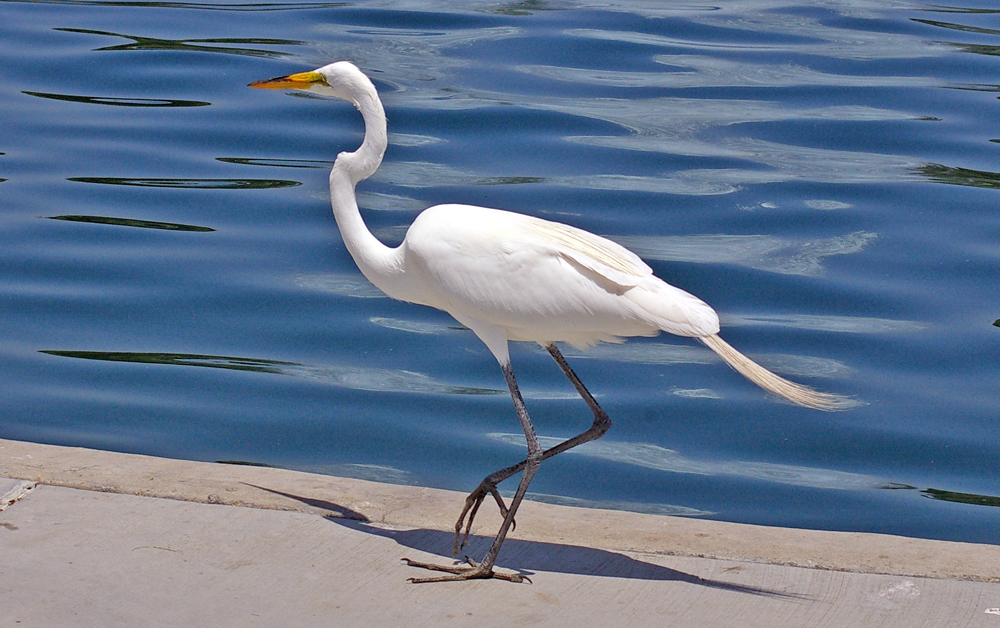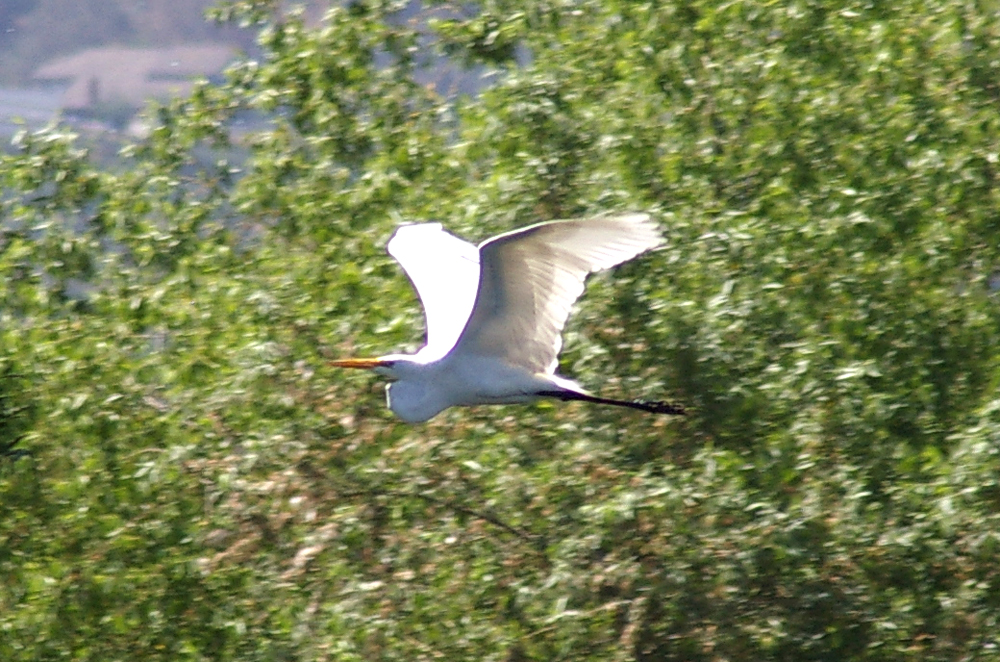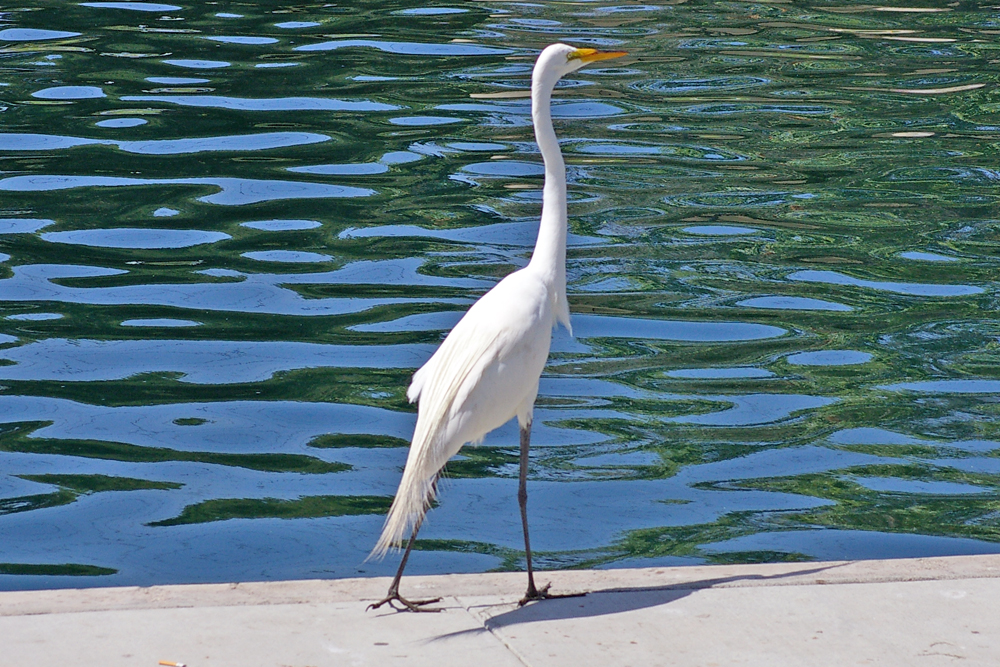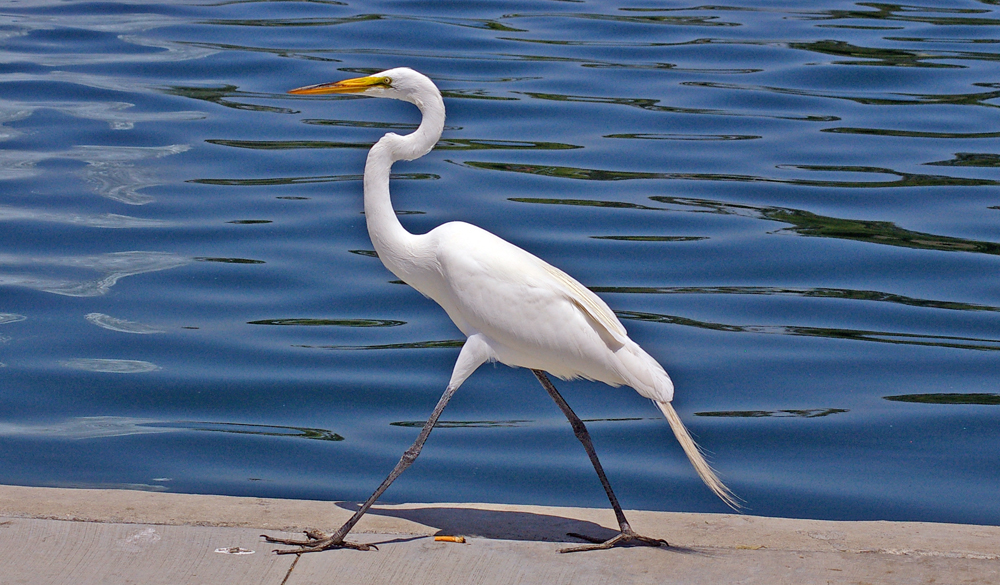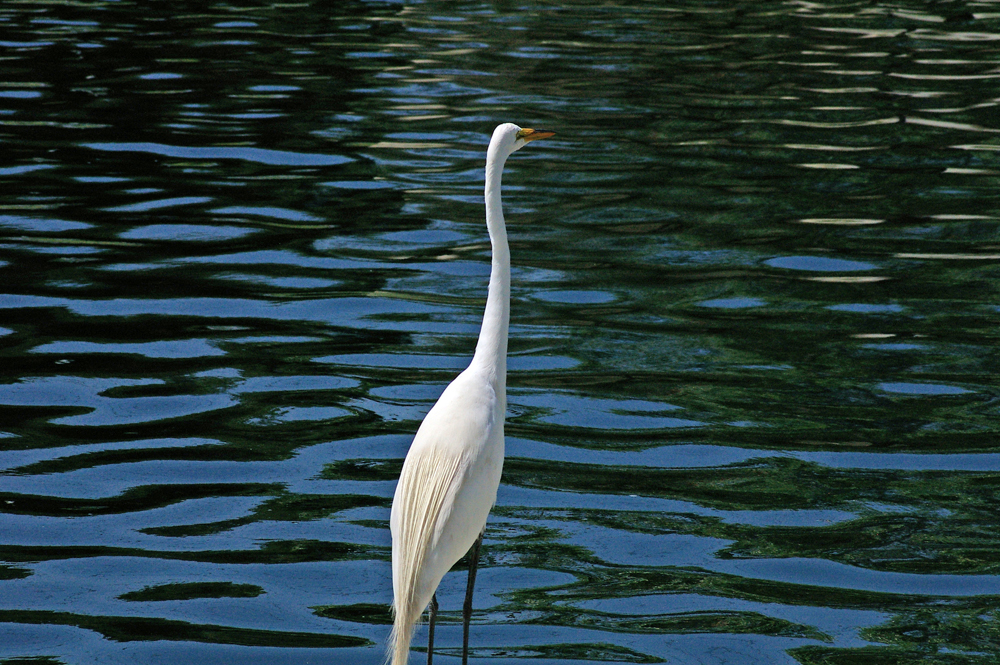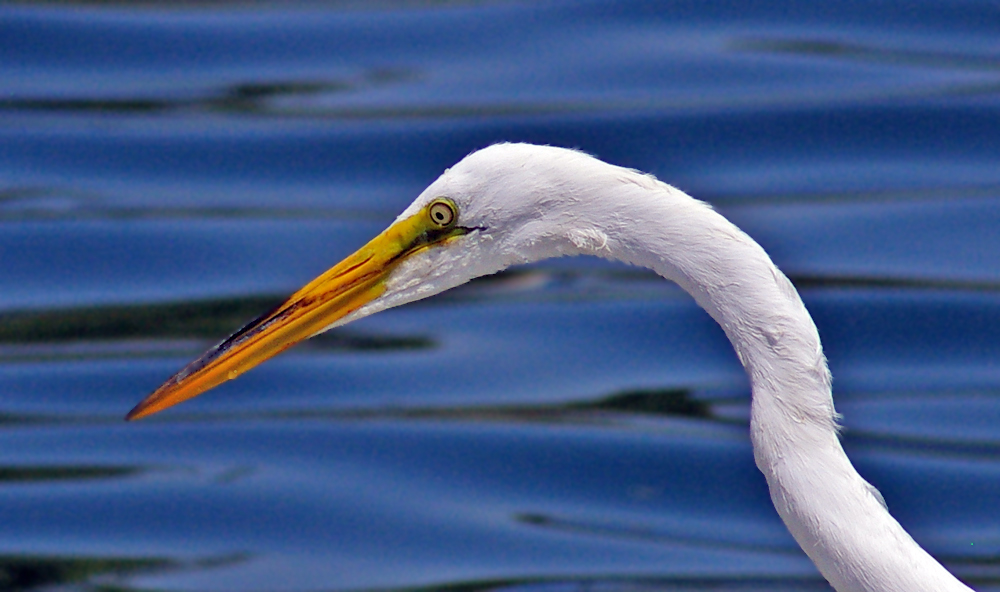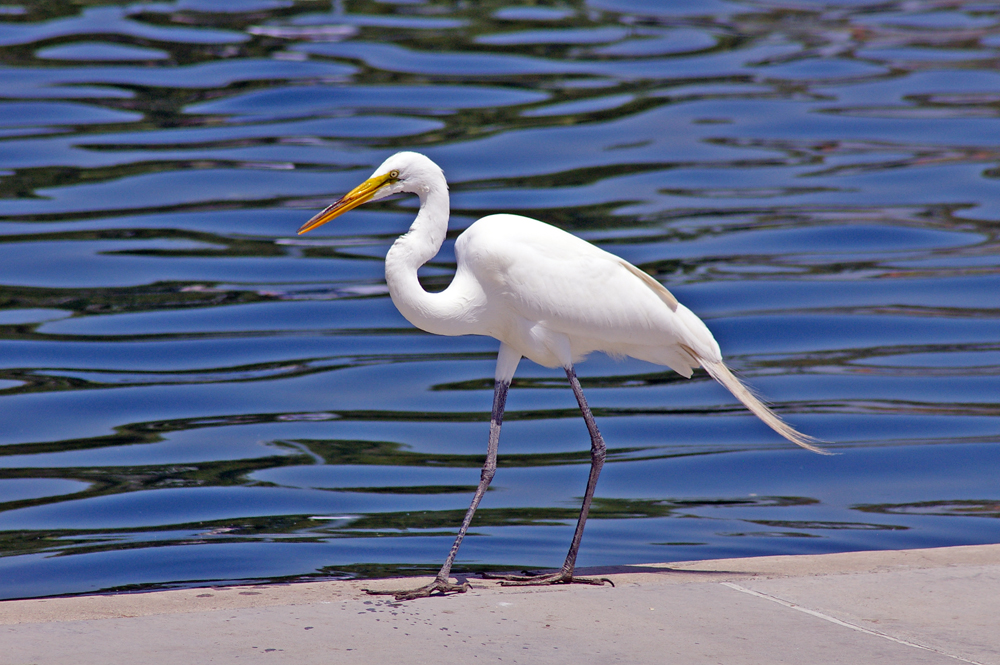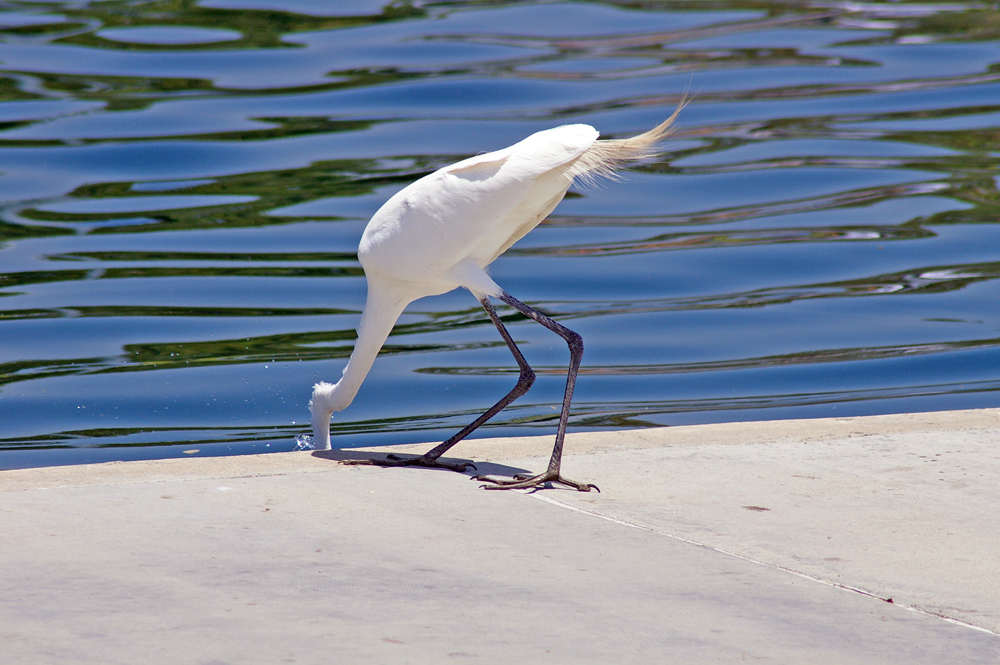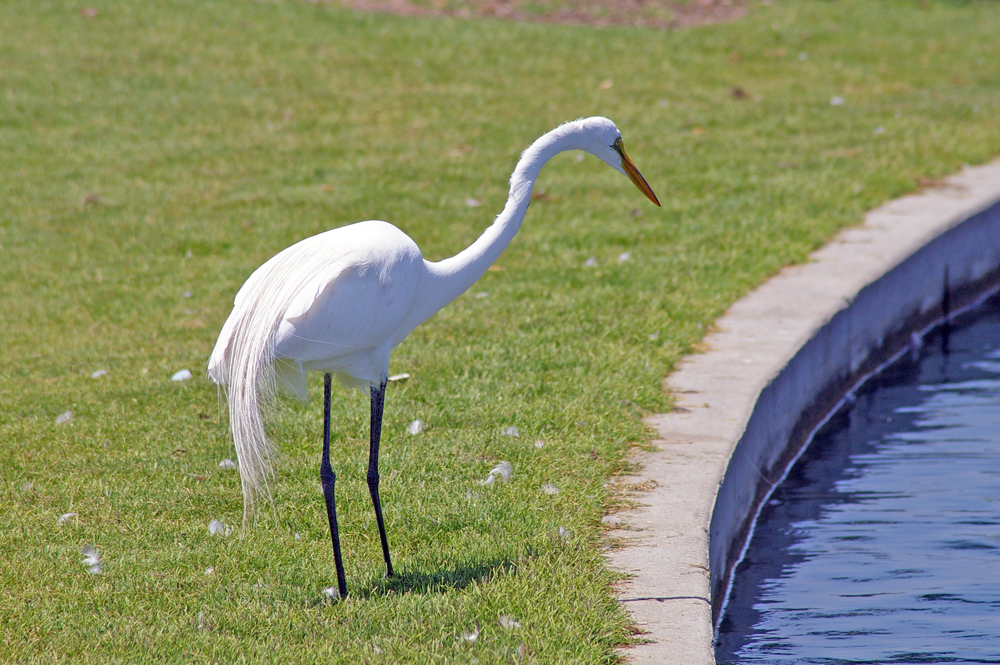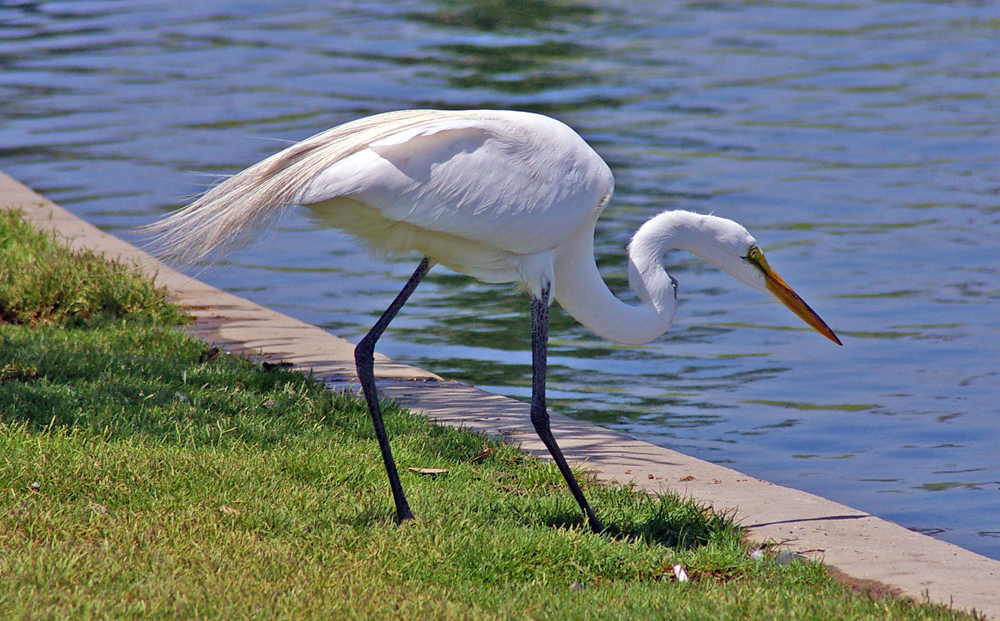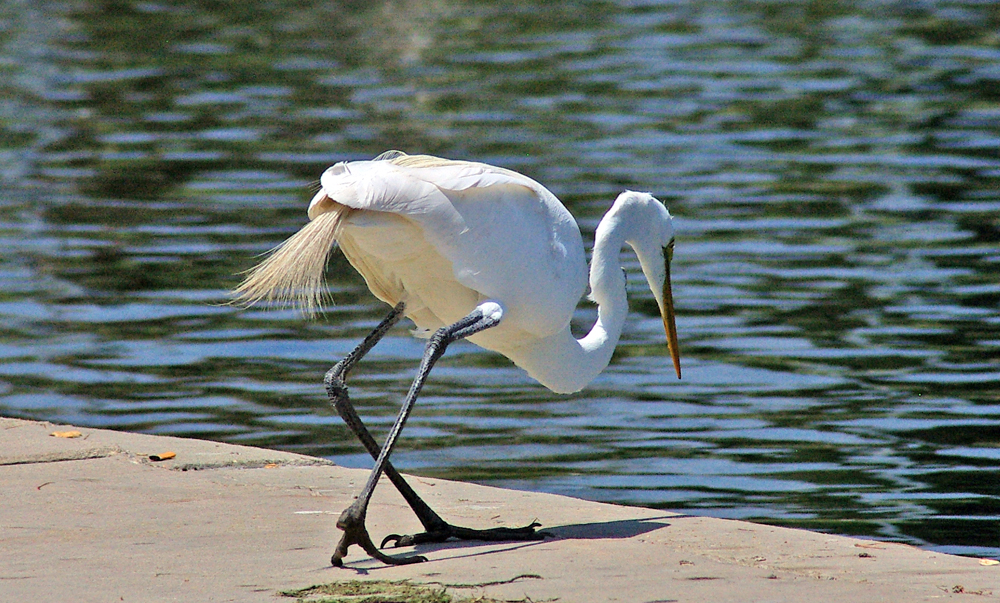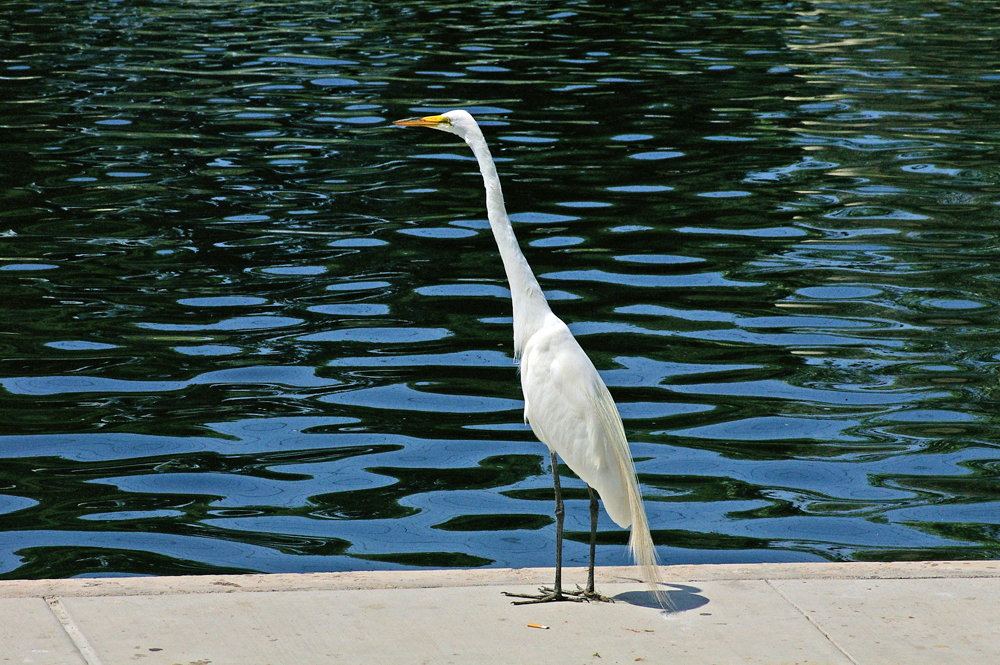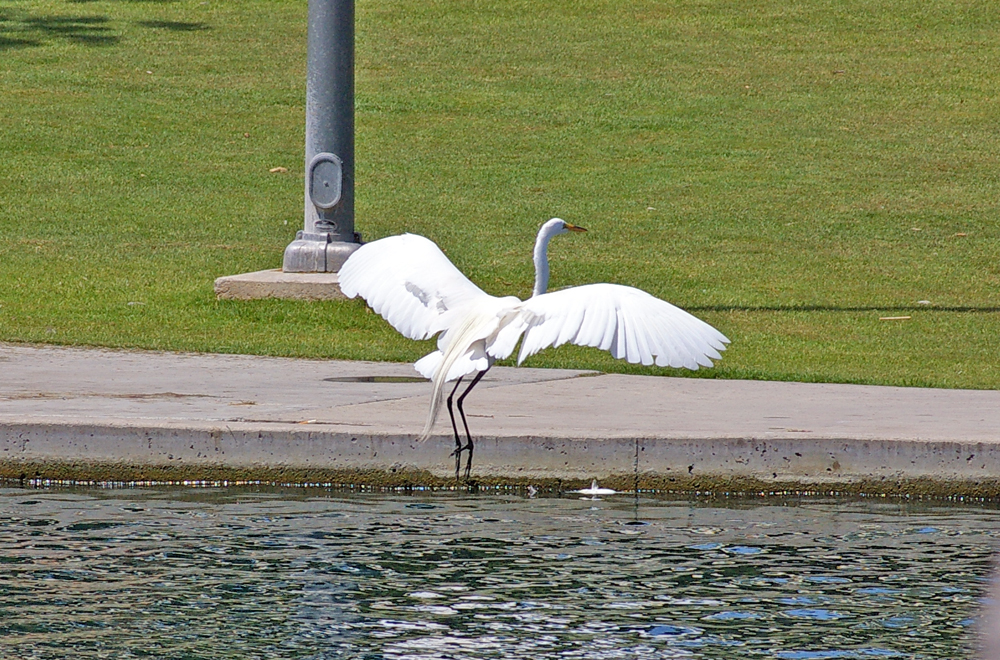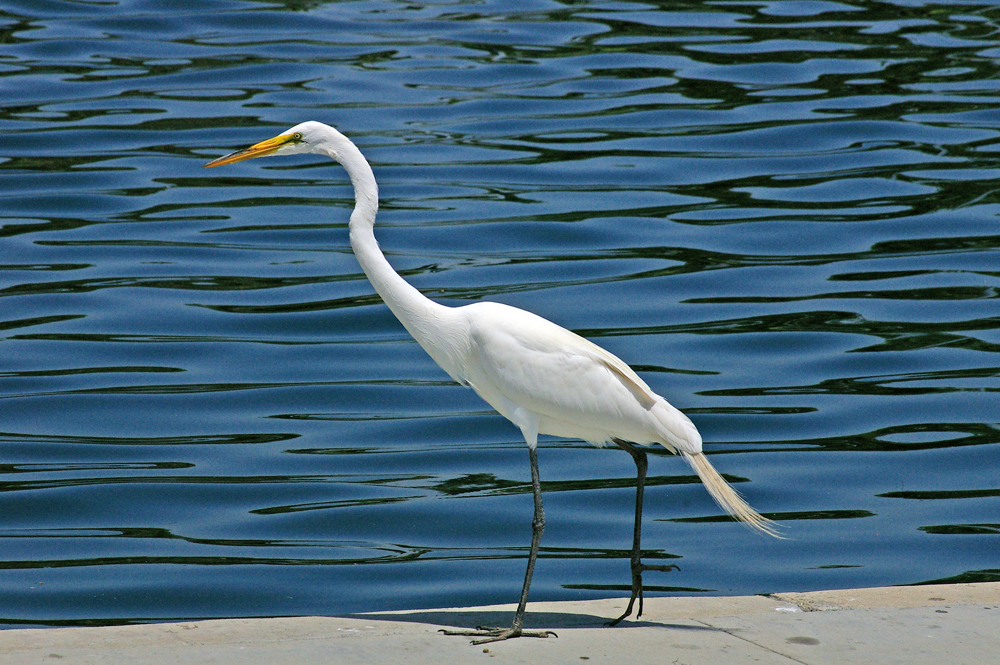|
|
|
 |
Great Egret
|
| Ardea alba | |
A large white heron, the Great Egret is found across much of the world, from southern Canada southward to Argentina, and in Europe, Africa, Asia, and Australia. It's the largest egret in the Old World, and thus has garnered the name Great White Egret. But in the Americas, the white form of the Great Blue Heron is larger and warrants that name. In the United States, the Great Egret used to be called the American Egret but that was hardly appropriate, since the species range extends beyond America and indeed farther than other herons.
Interesting Information
-
The Great Egret is the symbol of the National Audubon Society, one of the oldest environmental organizations in North America. Audubon was founded to protect birds from being killed for their feathers.
-
Not all young that hatch survive the nestling period. Aggression among nestlings is common and large chicks frequently kill their smaller siblings.
-
The longevity record for a wild Great Egret is nearly 23 years.
Description
Adult Description
-
Size: 94-104 cm (37-41 in)
-
Wingspan: 131-145 cm (52-57 in)
-
Weight: 1000 g (35.3 ounces)
-
Large, all white heron.
-
Long, black legs and feet.
-
Yellow bill is long, stout, and straight.
-
Flies with neck pulled back in S-curve.
-
Bill yellow with dark top edge.
-
Long plumes on back during breeding.
-
No crest or plumes on head.
-
In high breeding, the bill becomes orange-yellow and the lores become lime-green.
Sex Differences
Sexes similar.
Immature
Looks like nonbreeding adult.
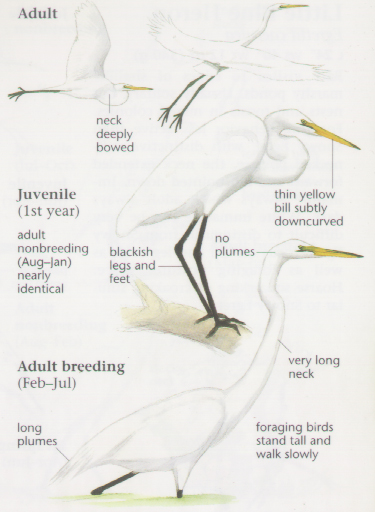
Photo taken from: The Sibley Field Guide by David Allen Sibley
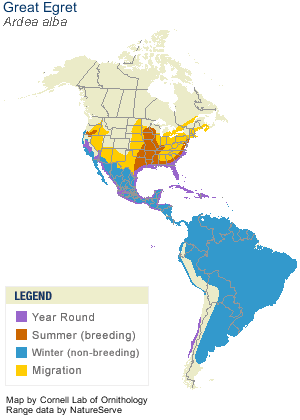
© 2003 Cornell Lab of Ornithology
|
Habitat |
|
|
Behavior |
|
Walks slowly, stands and stabs prey with quick lunge of the bill. |
|
Food |
|
Fish, invertebrates, amphibians, reptiles, birds, and small mammals. |
Taxonomy
| Kingdom: | Animalia |
| Phylum: | Chordata |
| Subphylum: | Vertebrata |
| Class: | Aves |
| Order: | Pelecaniformes |
| Family: | Ardeidae |
| Subfamily: | Ardeinaee |
| Genus: | Ardea |
| Species: | Ardea alba |
| Subspecies: | Ardea alba alba |
| Ardea alba egretta | |
| Ardea alba melanorhynchos | |
| Ardea alba modesta |
Similar Species |
|
|
Bird Sound |
|
A deep croak when disturbed. Other low calls around nest. |
|
Eggs look like this |
|
Photo taken from: ARCTOS Collaborative Collection Management Solution |
Videos
Great Egret 1
Up close and personal #1
Great Egret 2
Up close and personal #2
Great Egret 3
Walking on land
Great Egret 4
Great Egret meets little kid
Great Egret 5
Just Chill'n
